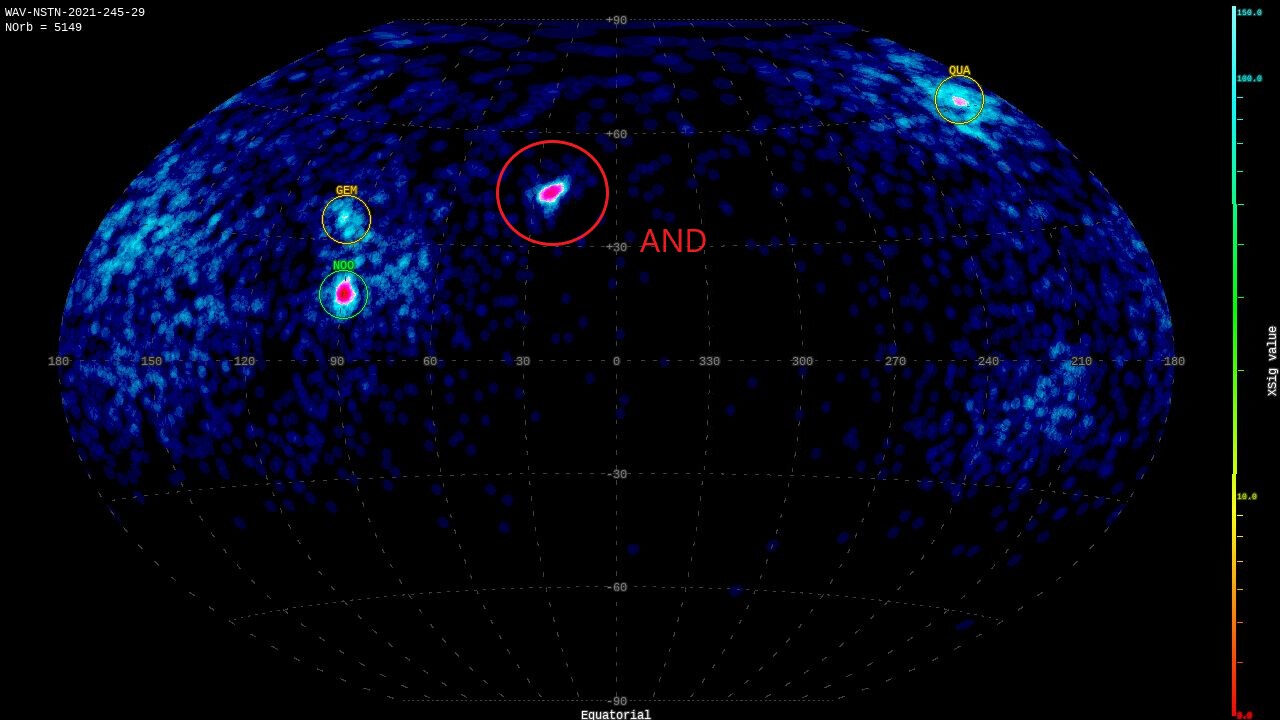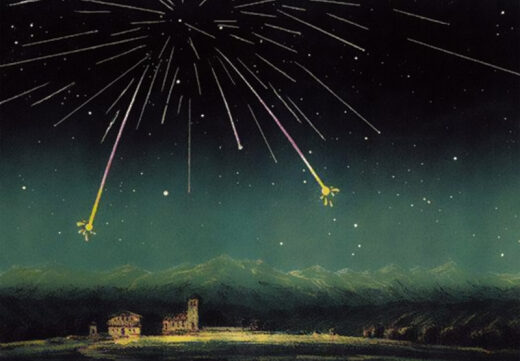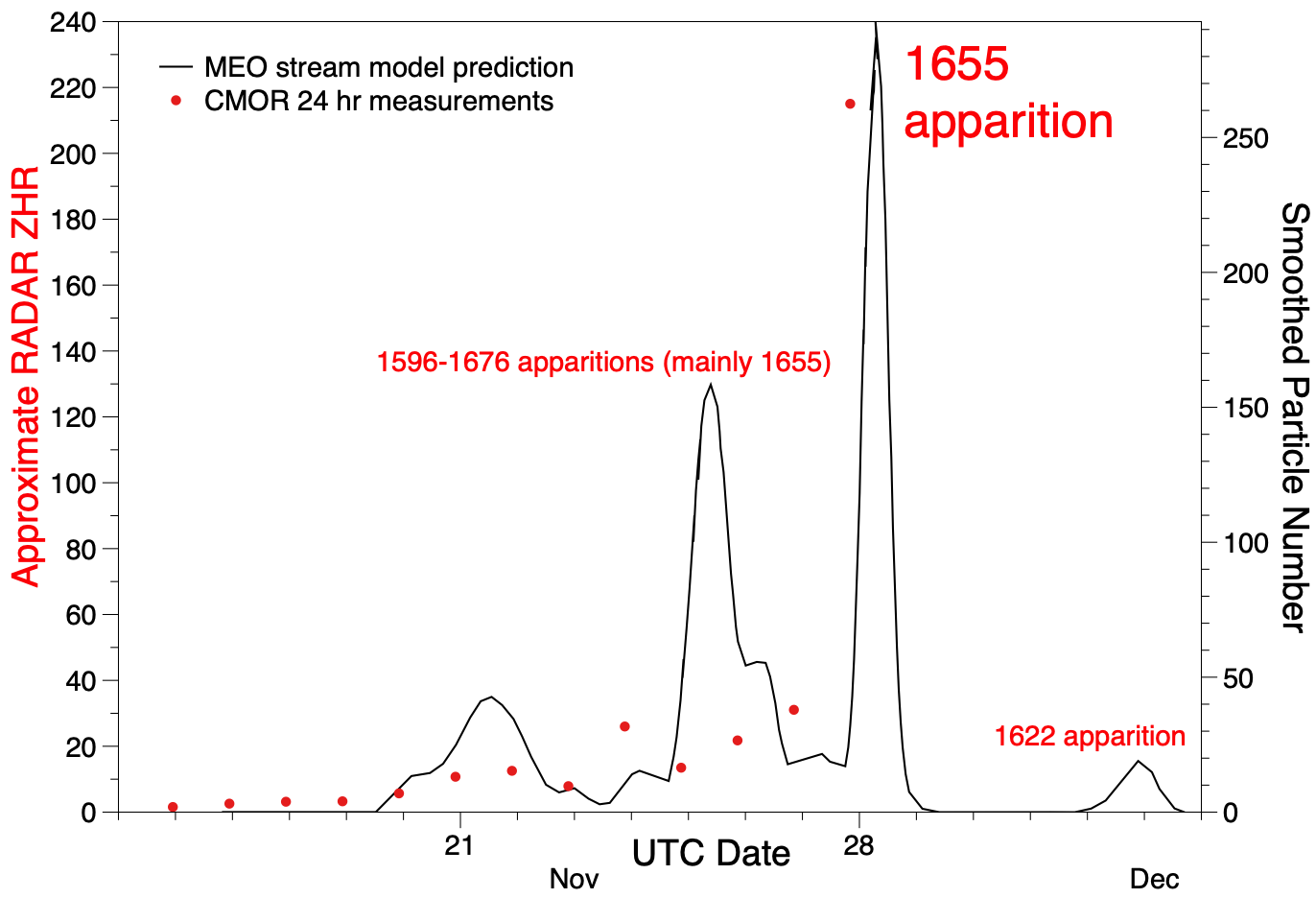The shower's not over yet. "The current outburst is ongoing and it may be another few days or even a week before the activity ramps down," says Brown. "These meteors are too faint to see with the naked eye, but they are easy targets for our radar."
Andromedids are debris from Biela's Comet, known to historians as "the comet that split in two." 3D/Biela started to fall apart not long after it was discovered in 1772. It was a double comet when it swung by Earth in 1852 and, after that, was never seen again. In 1872 and 1885, thousands of meteors shot out of the constellation Andromeda as Earth passed through Biela's remains. Chinese records described "stars that fell like rain."
Comment: For fascinating insight into Biela's comet, check out Laura Knight-Jadczyk's article Comet Biela and Mrs. O'Leary's Cow.
[ref]
Then the Andromedids vanished, too. The shower has been weak or absent entirely since the late 19th century. Only a surprise outburst in 2011 signaled that Biela's debris might still be lurking nearby. This week's activity is even more promising.
Bill Cooke of NASA's Meteoroid Environment Office (MEO) is one of several experts who have been modeling Biela's debris streams, hoping to forecast a return. "Our models generally do not do well in predicting the timing or intensity," he says. "However, this year our model got the timing roughly correct." This plot shows current radar data (red dots) vs. predicted debris stream crossings:
According to Cooke's model, the outburst on Nov. 28th was caused by a stream of dust laid down in 1655--interestingly before the comet fell apart. "We didn't think the 1655 crossing would produce much of anything," confesses Cooke. "So the outburst came as a bit of a surprise."
A team of astronomers led by Paul Wiegert (including Brown) had already predicted a strong naked-eye Andromedid outburst in December 2023. If they are right, the display two years from now could yield as many as 200 bright meteors an hour, surpassing even the Perseids and Geminids. The current outburst is providing new data for their stream models, and could help improve the predictions.
Stay tuned for updates as the shower continues.
Note: The Canadian Meteor Orbit Radar is operated through a cooperative agreement between Western University's Meteor Physics Group and NASA's Meteoroid Environment Office.






Comment: There appears to be a significant uptick of all kinds of Fire In The Sky activity:
- Megacomet Bernardinelli-Bernstein is the find of a decade, here's why
- HUGE meteor fireball lights up southern China's dark morning skies
- Large asteroid 2018 AH heading towards Earth late December, skimmed past 3 years ago unnoticed by scientists
See also:- Volcanoes, Earthquakes And The 3,600 Year Comet Cycle
- Something Wicked This Way Comes
- Enigmatic ancient brown dwarf discovered in solar neighborhood suggests more 'accidents' may be lurking in our galaxy - NASA
And check out SOTT radio's: